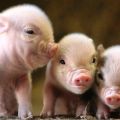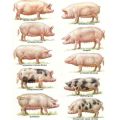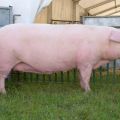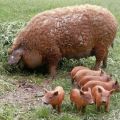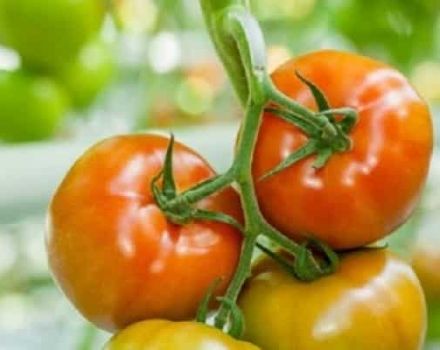Description and characteristics of the karmaly pig breed, rearing and breeding
When starting to breed pigs, you need to decide on the breed. It is recommended that you choose a variety that is easily adaptable to cold and hot climates. The karmala pig breed is considered the most unpretentious in terms of keeping conditions. They have good health, tolerate cold and heat well, and gain weight quickly. Pig karmales are valued by farmers for the excellent taste of meat and lard products, ease of care and breeding.
The origin of the breed, varieties of karals
Karmals appeared as a result of breeding work, the female mangalitsa and wild boar acted as parental forms. The resulting offspring were bred with a Korean pig, as a result, karmaly pigs were bred. They adopted features from their ancestors - their high resistance to diseases and good adaptability to any weather conditions speaks of the similarity with the wild boar. Hungarian braziers gave them a peculiar appearance, thanks to Korean pigs, karals are distinguished by an incredible calm temperament.
Karmal varieties are divided into two categories:
- ordinary;
- royal.
The breeders used a brazier and a Korean pot-bellied pig to obtain ordinary karmales. To breed royal karals, a hybrid was used, the parents of which were Mangalitsa and a Korean boar. Such offspring are intensively fattened, characterized by high meat-greasy characteristics.
Characteristics and description of the breed
The body of the karals is covered with thick, curly hair - it is their calling card. Abundant hair helps the animals withstand cold and heat, they even live in unheated pigsties. In terms of dimensions, the pockets exceed their ancestors, they feed quickly. Pigs are raised for meat as they have a small greasy layer. The meat is suitable for the production of bacon due to the small layer of fat. Despite the fact that piglets are actively recovering, they are not prone to obesity, even when fed abundantly. The active phase of growth is considered a period of 4-5 months, by the year they already weigh 200 kg.
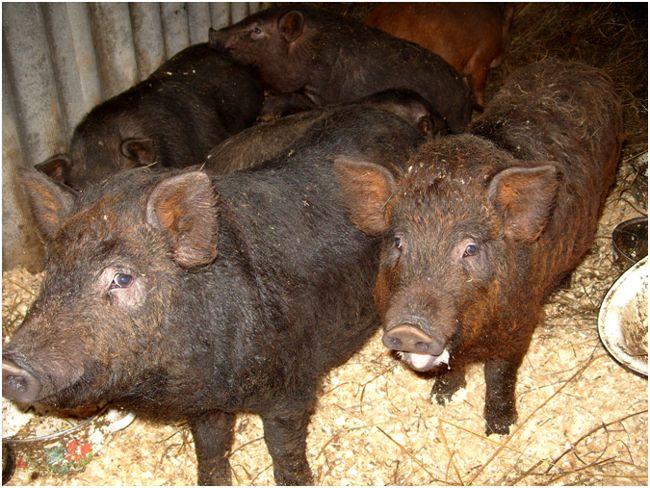
The Karmala pig breed is recognized by its exotic appearance and the following exterior characteristics:
- animals have a medium-sized head, proportional to the body;
- the snout is elongated, the ears are small;
- pigs have a short, powerful neck;
- adults are distinguished by short, strong and muscular legs;
- skin without spots, has a white, even shade;
- pigs are characterized by wide, massive hips.
Born offspring of karals can be easily distinguished from another breed by color.One sow gives birth to children of different colors, they have black, brown, gray colors. Striped or two-colored babies are often found. With the piglets growing up, the coat color becomes monotonous, the stripes disappear. The wool of an adult karmal is colored black, gray or brown.
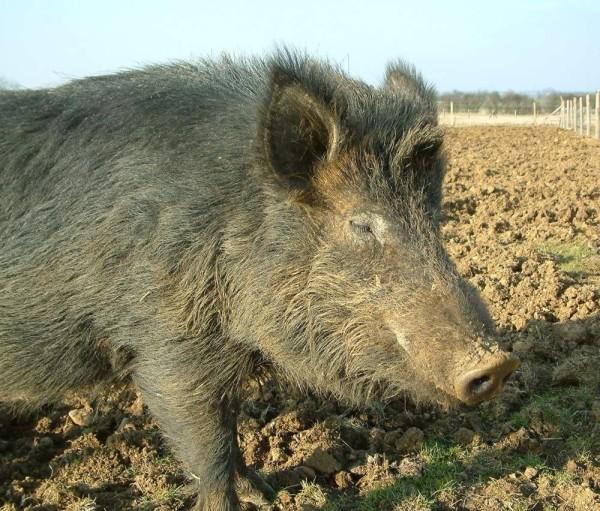
Pros and cons
Breeding karals has the following advantages:
- Animals have a calm temperament, they are not aggressive, they will not break a fence or dig a tunnel.
- The offspring becomes sexually mature after 7.5 months, they are already ready for mating, unlike other breeds, which at this time are only entering reproductive age.
- Piglets have a strong, resilient digestive system to help them process any food. A strong body and an active metabolism contribute to rapid weight gain.
- The advantage of animals is also called their thick hair - thanks to it, pigs live in non-insulated rooms, walk outside in hot or cold weather.
- Piglets are distinguished by beautiful colors - their wool can have variegated, gray-gray, black, brown, mixed colors. Their backs are covered with stripes that disappear as they grow older.
- The breed is distinguished by a minimum fat layer, while they have a maximum meat layer. The meat will not be covered with a layer of fat, even with abundant feeding.
There are practically no negative sides to growing karals. The only caveat is their semi-savagery - even with a long stay in the pigsty, they can be afraid of the owner and other people. But this is not considered a significant drawback.

The Karmala pig breed is a favorite among the varieties raised for meat production due to its calm temperament, high adaptation to any living conditions.
How to choose piglets when buying
Buying pigs should be approached responsibly. Despite good health, high adaptation of pigs to all living conditions, there is a possibility of acquiring an unhealthy animal. To acquire healthy piglets, it is recommended to observe the following rules:
- When choosing animals, you should carefully examine the tail - in a healthy pig, it is covered with wool, does not adhere to the body.
- So that cunning sellers do not fool the buyer and sell him another breed instead of a karmal, professionals recommend that you familiarize yourself with photographs and biological characteristics of animals in advance.
- When choosing piglets, attention is paid to their breathing. Pigs with wheezing do not get - they have a disease of the respiratory system, in which they will not live long.
- Newborn piglets are covered with thick hair, so if a bald or semi-bald pig is for sale, you should refuse to buy it.
Karmalov is considered one of the most popular meat breeds with a minimum body fat. To minimize fatty tissue on meat, it is recommended to acquire the noisiest, mobile piglets with powerful hooves and high legs. The activity of the animal will make its carcass more meaty.

Specificity of care
Karmals do not need special care, their content is no different from breeding other varieties. For the pigs to be comfortable, it is necessary to fence off their area of residence or build a pigsty.
It is preferable to make an aviary in a place where edible grass grows. For the sow and piglets, it is necessary to equip a special place, sheltered from wind and draft.
The walking area is fenced off with a net without fear that the pigs will begin to break the fence and undermine the fence. Pigs are characterized by a phlegmatic temperament, they are calm and non-aggressive. It is recommended to make the fence higher, as pigs often come to the fence and push the enclosure with their front paws, which can lead to breakage of the fence.
Nutrition
Growing karmales is not particularly difficult because the animals consume all the food they are given.
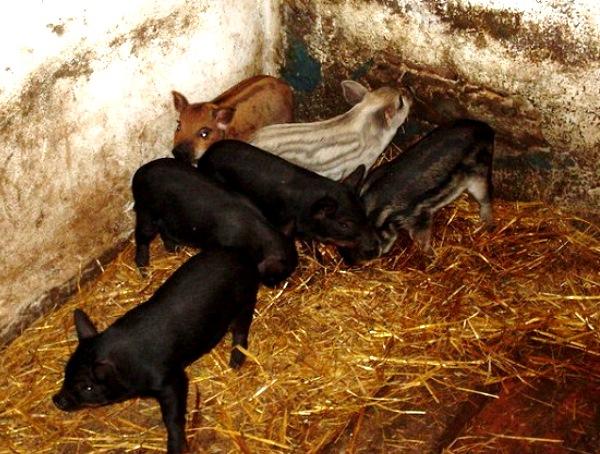
They eat:
- hay;
- grass;
- silage;
- grain;
- cereals;
- potatoes;
- beets.
Such products accelerate the process of weight gain - by 7 months the pocket weighs from 85 to 125 kg. The karmals do not need to additionally steam the mash, they eat raw and chopped food. The advantage of the breed is that they are able to rapidly recover from food waste. This reduces the amount of feed they eat, unlike other breeds.
Despite the unpretentiousness of animals to food, it should be borne in mind that feeding karals with certain products changes the taste characteristics of meat:
- from dairy products, meat is tender and aromatic;
- when eating fish, the meat of karals is saturated with a peculiar fishy smell;
- a large number of cereals and vegetables consumed makes the meat insipid;
- due to feeds such as cake, soybeans, fishmeal, the characteristics of meat are reduced.
If the pig eats compound feed, its content should be no more than 65-70% of the total diet. The rest is allocated to cereals, vegetables, grass, dairy products, and bran.
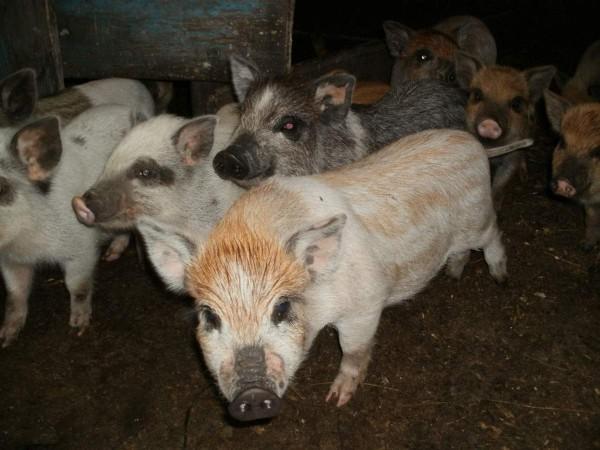
Breeding features
The puberty of karals comes early - at 4 months they already enter the reproductive phase, at 7-8 months they mate and acquire piglets. Animals are distinguished by a high rate of productivity: the number of offspring per birth is from 10 to 20 piglets.
The sow gives birth on her own, she does not need human help. Sufficient milk is produced for feeding small pigs; babies quickly recover from abundant feeding. Caring for newborn gilts is not required, since karmal sows have a developed maternal instinct, they surround the piglets with care.
The only maintenance requirement is the construction of a small barn and a walking area. When the pigs are 1-1.5 months old, they are weaned from the mother's breast and transferred to herbal feed and soft cereals.
Diseases and their treatment
The pigs have a strong immune system inherited from their ancestors. Piglets do not require vaccinations, their immune system resists various infections. Veterinarians recommend regularly treating animals from helminths. The pig is bathed in a specially equipped bathing trough, where water with machine oil is poured - this method protects the kids from various pathologies.
Taste features of lard and meat
With proper feeding of animals, the meat is tender, juicy and aromatic. When growing karmales, priority is given to obtaining meat, the percentage of lard is no more than 10-15%. To preserve the juiciness and softness of the meat, pigs are slaughtered at the age of 1-1.5 years, when they weigh 200-225 kg.


